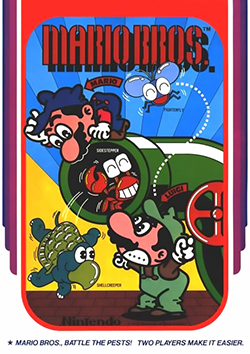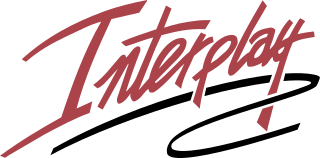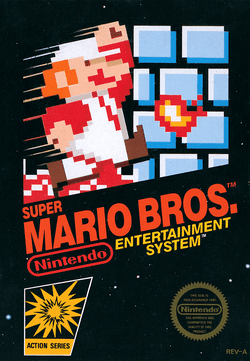
Kid Icarus is a platform video game developed and published by Nintendo for the Family Computer Disk System in Japan and the Nintendo Entertainment System in Europe and North America. It was released in Japan in December 1986, in Europe in February 1987, and in North America in July.

Mario Kart: Super Circuit is a 2001 kart racing game for the Game Boy Advance (GBA). It is the third Mario Kart game and retains its predecessors' gameplay: as a Mario franchise character, the player races opponents around tracks based on locales from the Super Mario platform games. Tracks contain obstacles and power-ups that respectively hamper and aid the player's progress. Super Circuit includes various single-player and multiplayer game modes, including a Grand Prix racing mode and a last man standing battle mode.

Shigeru Miyamoto is a Japanese video game designer, producer and game director at Nintendo, where he serves as one of its representative directors as an executive since 2002. Widely regarded as one of the most accomplished and influential designers in video games, he is the creator of some of the most acclaimed and best-selling game franchises of all time, including Mario,The Legend of Zelda, Donkey Kong, Star Fox and Pikmin. More than 1 billion copies of games featuring franchises created by Miyamoto have been sold.

Mario Bros. is a platform game developed and published by Nintendo as an arcade video game in 1983. It was designed by Shigeru Miyamoto and Gunpei Yokoi, Nintendo's chief engineer. Italian twin brother plumbers Mario and Luigi exterminate creatures, like turtles (Koopas) and crabs emerging from the sewers by knocking them upside-down and kicking them away. The Famicom/Nintendo Entertainment System version is the first game produced by Intelligent Systems. It is part of the Mario franchise, but originally began as a spin-off from the Donkey Kong series.

Mario is a character from the Mario franchise. Created by the Japanese video game designer Shigeru Miyamoto, he is the mascot of the video game company Nintendo. Mario is an Italian plumber who resides in the Mushroom Kingdom with his younger twin brother, Luigi. Their adventures generally center on rescuing Princess Peach from the villain Bowser while using power-ups that give them different abilities.

The Legend of Zelda: Ocarina of Time is a 1998 action-adventure game developed and published by Nintendo for the Nintendo 64. It was released in Japan and North America in November 1998 and in PAL regions the following month. Ocarina of Time is the first game in The Legend of Zelda series with 3D graphics.

The Legend of Zelda: Majora's Mask is a 2000 action-adventure game developed and published by Nintendo for the Nintendo 64. It was the second The Legend of Zelda game to use 3D graphics, following Ocarina of Time (1998). Designed by a creative team led by Eiji Aonuma, Yoshiaki Koizumi, and Shigeru Miyamoto, Majora's Mask was completed in less than two years. It featured enhanced graphics and several gameplay changes, but reused elements and character models from Ocarina of Time, which the game's creators called a creative decision made necessary by time constraints.

The 64DD is a magnetic floppy disk drive peripheral for the Nintendo 64 game console developed by Nintendo. It was announced in 1995, prior to the Nintendo 64's 1996 launch, and after numerous delays was released in Japan on December 13, 1999. The "64" references both the Nintendo 64 console and the 64 MB storage capacity of the disks, and "DD" is short for "disk drive" or "dynamic drive".

Mario Is Missing! is a 1993 educational game developed and published by The Software Toolworks for MS-DOS, Nintendo Entertainment System, and Super Nintendo Entertainment System, later released on Macintosh in 1994. The player controls Luigi, who must travel around the world to find and return stolen treasures as part of a quest to find his brother, Mario, who has been captured by Bowser. Mario Is Missing!, part of a series of educational Mario games, was Luigi's second starring role in a video game, following the 1990 Game Watch game Luigi's Hammer Toss and preceding the 2001 GameCube game Luigi's Mansion.

Interplay Entertainment Corp. is an American video game developer and publisher based in Los Angeles. The company was founded in 1983 as Interplay Productions by developers Brian Fargo, Jay Patel, Troy Worrell, and Rebecca Heineman, as well as investor Chris Wells. As a developer, Interplay is best known as the creator of the Fallout series and as a publisher for the Baldur's Gate and Descent series.

Mario Teaches Typing is an educational video game developed and published by Interplay Productions for MS-DOS compatible operating systems, Microsoft Windows, and Macintosh. The game uses the Mario character, licensed from Nintendo, to teach keyboard skills. A sequel to the game, Mario Teaches Typing 2, was developed by Brainstorm and published by Interplay in 1997.

Mario Artist is an interoperable suite of three games and one Internet application for Nintendo 64: Paint Studio, Talent Studio, Polygon Studio, and Communication Kit. These flagship disks for the 64DD peripheral were developed to turn the game console into an Internet multimedia workstation. A bundle of the 64DD unit, software disks, hardware accessories, and the Randnet online service subscription package was released in Japan starting in December 1999.
Donkey Kong is a video game series and media franchise created by the Japanese game designer Shigeru Miyamoto for Nintendo. The franchise follows the adventures of Donkey Kong, a large, powerful gorilla. Donkey Kong series include the original arcade game trilogy by Nintendo R&D1; the Donkey Kong Country series by Rare and Retro Studios; and the Mario vs. Donkey Kong series by Nintendo Software Technology. Various studios have developed spin-offs in other genres such as racing and rhythm. The franchise also incorporates animation, printed media, a theme park, and merchandise.
Earthworm Jim is a series of platform games featuring an earthworm named Jim who wears a robotic suit and battles the forces of evil. The series is noted for its platforming and shooting gameplay, surreal humor, and edgy art style. Four games were released in the series: Earthworm Jim, Earthworm Jim 2, Earthworm Jim 3D, and Earthworm Jim: Menace 2 the Galaxy, with the first game released in 1994. The series had lain dormant for almost a decade before Gameloft remade the original game in HD for PlayStation Network and Xbox Live Arcade in 2010. Interplay announced Earthworm Jim 4 in 2008; little to no information surfaced until May 2019 and August 2020, and development went dormant once again by January 2023.

Mario is a Japanese multimedia franchise created by Japanese game designer Shigeru Miyamoto for video game company Nintendo, which produces and publishes its installments. Starring the titular Italian plumber Mario, it is primarily a video game franchise but has extended to other forms of media, including television series, comic books, a 1993 feature film, a 2023 animated film, and theme park attractions. The series' first installment was 1983's Mario Bros., although Mario made his first appearance in 1981's arcade game Donkey Kong and had already been featured in several games of the Donkey Kong and Game & Watch series. The Mario games have been developed by a wide variety of developers, including Nintendo, Hudson Soft, and AlphaDream. Mario games have been released almost exclusively for Nintendo's various video game consoles and handhelds, from the third generation onward.

Super Mario Bros. is a platform game developed and published in 1985 by Nintendo for the Famicom in Japan and for the Nintendo Entertainment System (NES) in North America. It is the successor to the 1983 arcade game Mario Bros. and the first game in the Super Mario series. Following a US test market release for the NES, it was converted to international arcades on the Nintendo VS. System in early 1986. The NES version received a wide release in North America that year and in PAL regions in 1987.















